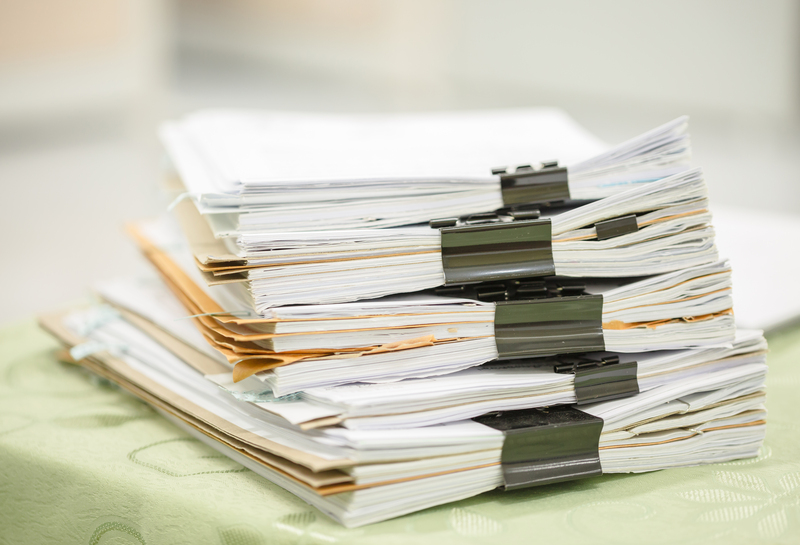Preparing Your Freezer for Long-Term Inactivity
Posted on 25/05/2025
Preparing Your Freezer for Long-Term Inactivity: The Complete Guide
When it comes to home appliances, your freezer is an often-overlooked hero. However, there might be times when your freezer requires a break--be it for a long-term vacation, renovation, seasonal closure, or any extended period of non-use. Properly preparing your freezer for long-term inactivity is crucial to ensure it operates efficiently when you need it again and avoids costly damage. In this comprehensive guide, we will cover all the essential steps to get your freezer ready for a period of disuse, offering practical tips and valuable insights for homeowners and renters alike.

Why Proper Preparation Matters
Freezers are designed to keep food safely frozen with minimal maintenance, but when left inactive without preparation, they can fall victim to a variety of problems. Mold growth, unpleasant odors, mechanical issues, and pest infestations are just a few of the potential setbacks. In addition, inefficient long-term shutdown can result in higher energy bills and even total appliance failure when you restart it.
- Prevents Mold and Mildew: Moist environments can lead to growth inside the appliance.
- Protects Against Odors: Leftover food particles and moisture can create stubborn smells.
- Saves Energy: Unused freezers left running waste electricity and money.
- Avoids Mechanical Failures: Freezers need a break in the right way to remain in good working condition.
Let's explore how you can prepare your freezer for extended periods of inactivity to preserve its lifespan and make the next use easy and worry-free.
Step-by-Step Instructions for Preparing Your Freezer for Long-Term Inactivity
1. Remove All Contents
Start by removing every item from the freezer. Check for expired or freezer-burned items and dispose of them. For safe food storage, consider:
- Using a cooler to temporarily store items in another freezer
- Asking friends or family to hold any valuable or perishable foods
Closing the freezer while items remain inside, even for a brief period, increases the risk of spoilage and unwanted smells.
2. Unplug and Power Off
Once the freezer is empty, safely unplug the appliance or switch it off at the circuit breaker. This not only saves energy but is an important safety precaution if you'll be away or during renovations.
- Never attempt to defrost or clean an active freezer to avoid electrical hazards.
3. Defrost the Freezer
Most freezers accumulate frost over time. Don't let it remain during inactivity:
- Allow the freezer to defrost completely. This prevents water pooling and possible interior damage.
- Use towels to soak up melting ice.
- Remove drawers, trays, and shelves for easier drying.
If your freezer has a manual defrost option, follow the manufacturer's instructions. For self-defrosting models, time and patience are key.
4. Clean and Disinfect Thoroughly
Hygiene is paramount. Once all ice has melted, wipe the interior surfaces with a solution of two tablespoons of baking soda dissolved in one quart of warm water. This neutralizes odors and removes stains or sticky spots.
- Use a soft cloth or non-abrasive sponge to avoid damaging surfaces.
- Clean all removable parts and dry them separately.
- Don't forget the door seal, vents, and any crevices where residue may collect.
A clean freezer means a fresh start when you next use it.
5. Dry the Appliance Fully
After cleaning, leave the door open for several hours to ensure complete drying. Moisture left behind promotes mold growth and foul smells.
- Place a towel at the base to catch any remaining drips.
- Consider using a small fan for quicker drying.
6. Prevent Odors and Mold
Prevent unwanted smells and mold during months of inactivity by:
- Placing an open box of baking soda or activated charcoal inside.
- Using moisture absorbers or silica gel packs (especially in humid environments).
- Propping the door open with a rolled towel or special door wedge (never close it entirely).
Leaving the door slightly ajar is crucial. It promotes airflow, reducing humidity and discouraging both mildew and pests from taking up residence inside.
7. Move and Store the Appliance Correctly
If you need to move the freezer to a different location during its period of inactivity:
- Transport the freezer upright to avoid oil leakage from the compressor.
- Ensure it's stored in a dry, cool place, away from direct sunlight or heat sources.
- Avoid areas prone to flooding or extreme temperature fluctuations.
Tip: If the freezer must be stored in a garage or basement, check the manufacturer's recommended storage temperature range.
8. Protect the Freezer's Exterior
A freezer's outside is as important as its inside. Clean exterior surfaces with mild soap and water. For stainless steel finishes, use an appropriate cleaner and a microfiber cloth. Don't forget to:
- Dust rear coils, if exposed, with a soft brush or vacuum.
- Check door seals for wear and repair or replace if needed.
- Ensure the appliance is positioned on a level surface to prevent warping.
9. Secure Electrical Safety
Double check plugs and cords for damage. Roll the power cord loosely and secure it to the back of the freezer (many models have hooks for this purpose). This protects the plug from dust and accidental damage while unused.
10. Cover the Freezer (Optional)
To protect against dust accumulation and scratches during prolonged inactivity, cover the freezer with a breathable material such as an old bedsheet. Avoid plastic covers as they can trap condensation and spur mold growth.
Frequently Asked Questions About Freezer Inactivity
How long can I leave my freezer unplugged?
A properly prepared freezer can remain unplugged for many months or even years without negative effects--provided it is clean, dry, and well-ventilated. Leaving moisture or food residues behind, however, can ruin the appliance in just weeks.
Will a freezer break if left unused?
Leaving a freezer empty and unplugged does not harm the appliance, as long as it was shut down and cleaned properly. Mechanical parts benefit from inactivity if protected from humidity, pests, and dust. Never restart a freezer that has been relocated until it's been upright and settled for several hours.
Should I leave the door open or closed?
Always keep the freezer door slightly ajar during long-term storage. This prevents mold growth and musty odors. You can use a special door-prop accessory or a rolled-up towel to achieve the right amount of opening.
Is it necessary to remove the freezer from power if I'm gone for only a few weeks?
For absences of less than a month, and provided some items must remain frozen, you may choose to keep the freezer running. For longer periods, or if the appliance will be empty, unplug it using the steps described in this guide to prevent unnecessary wear and electricity use.
Extra Tips for Long-Term Freezer Care
- Check the freezer periodically if possible, especially during humid seasons.
- Apply a thin layer of petroleum jelly to door seals after cleaning to prolong their life and prevent sticking.
- Label the freezer as "Out of Use" to alert others during renovations, moves, or shared housing situations.
- Keep the owner's manual in a safe, accessible place for future reference.
- If moving or donating, follow all recommended safety procedures for transport.
When It's Time to Restart: How to Bring Your Freezer Back Into Use
Once the storage period ends, it's important to restart your freezer safely and efficiently. Here's a simple plan:
- Inspect the Appliance: Open the door fully and check for any visible mold, dust, or pests.
- Clean Again (if needed): Wipe down interior and exterior surfaces.
- Plug In and Wait: After plugging back in, allow the freezer to cool for several hours to reach optimal freezing temperature before reloading items.
- Restock Carefully: Only add food once the appliance is fully cold to avoid temperature spikes and food safety concerns.
Common Mistakes to Avoid When Preparing Your Freezer for Long-Term Inactivity
- Failing to Defrost: Leaving frost inside leads to water damage and odors.
- Not Cleaning Thoroughly: Even small food particles can cause big problems later.
- Forgetting to Prop the Door Open: A closed door traps moisture, inviting mold.
- Using Plastic Covers: These block air circulation and trap condensation.
- Storing in Poor Conditions: Garages or basements prone to temperature swings or damp are risky.

Environmental and Cost Benefits
Properly preparing your freezer for inactivity does more than protect your investment:
- Reduces Energy Consumption: Turning off unused appliances lowers utility bills and environmental impact.
- Extends Appliance Lifespan: Reduced wear and proactive maintenance mean fewer repairs and replacements.
- Promotes Hygiene and Safety: Prevents food odors, pests, and hazardous mold buildup.
Conclusion: Protect Your Investment
Taking the time to prepare your freezer for long-term inactivity is a wise step that saves you time, money, and hassle down the road. De-icing, cleaning, drying, and propping the door open are key, complemented by some easy preventive measures. Whether it's for a season, a renovation, or as part of a move, a little effort now ensures your freezer is fresh, efficient, and safe for your next use. Don't let neglect cause problems you can easily avoid--follow this guide for peace of mind and a longer-lasting freezer!










